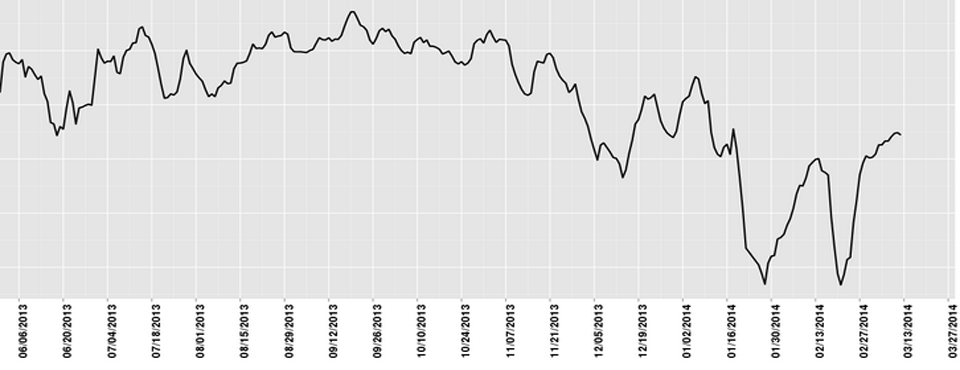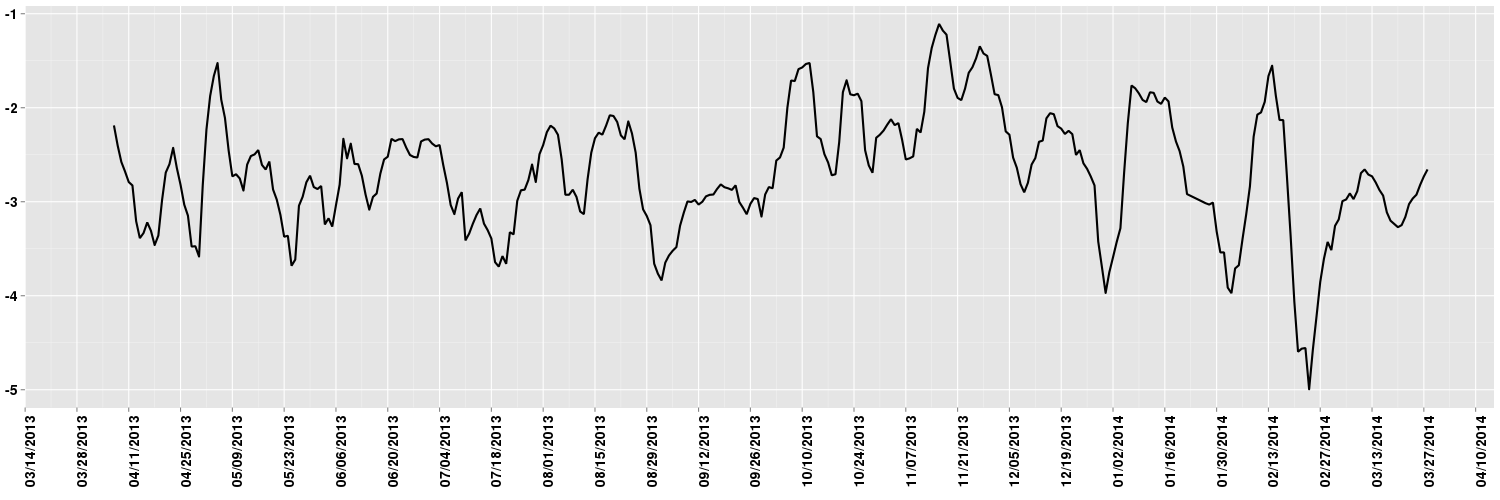
Emotion has become an increasingly powerful lens through which to explore the world, as a growing literature demonstrates the ability to extract powerful latent cues from our daily discourse and the connection of those cues to physical action. For example, few countries have collapsed in the midst of skyrocketing popular support for their leadership or soaring public optimism for the future. The ability to measure the emotion surrounding leaders, policies, events, or daily life in general, poses tremendous opportunity for peering ever-further into the emotional precursors of major unrest. Indeed, the GDELT World Leaders Index ranks all world leaders every 24 hours by the average tone of their news coverage.
The timeline above shows the average emotion of all coverage each day mentioning Russian President Vladimir Putin. In this case, the average global tone of Putin’s coverage over the past year has been negative (this is common for world leaders) and thus numbers closer to zero indicate greater positivity, while more negative numbers indicate greater negativity in coverage of him.
One quite intriguing feature of this graph is the surge in positive coverage since Putin’s invasion of Crimea, tied largely to global portrayal of Russia’s military strength and postured invulnerability against Western inaction. Such indicators can offer useful insights into changing global media portrayals of major leaders, especially reaction to emerging events and how they are being contextualized throughout the globe.
Try it for yourself with the Global Knowledge Graph Tone Timeline Visualization from the GDELT Analysis Service!
Happy tone timelining!
